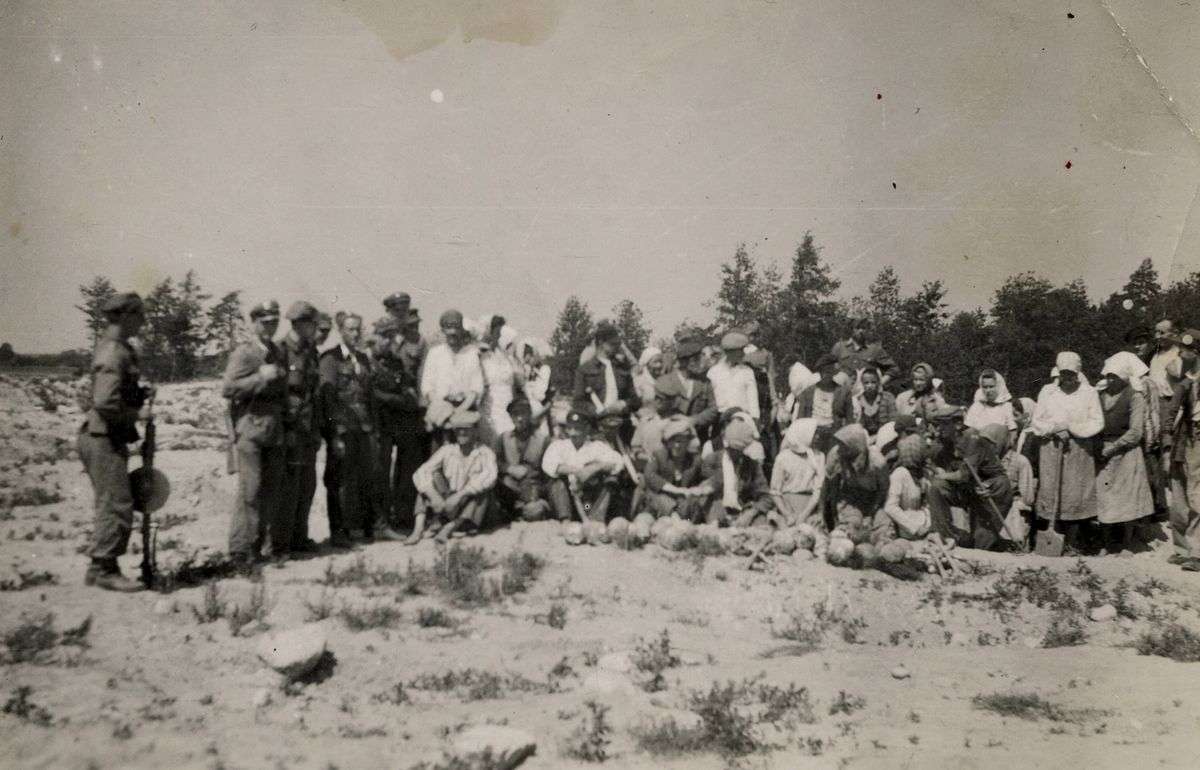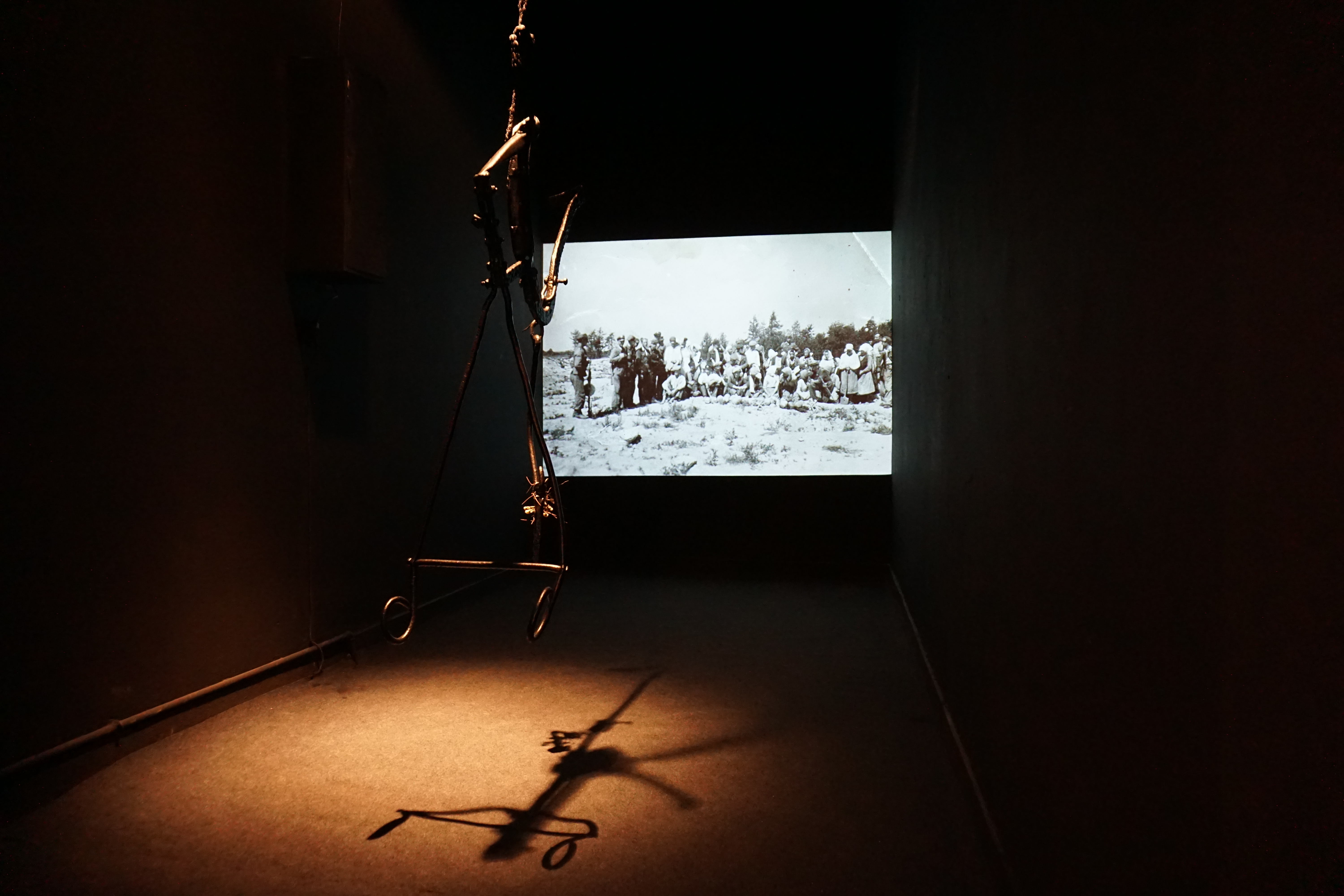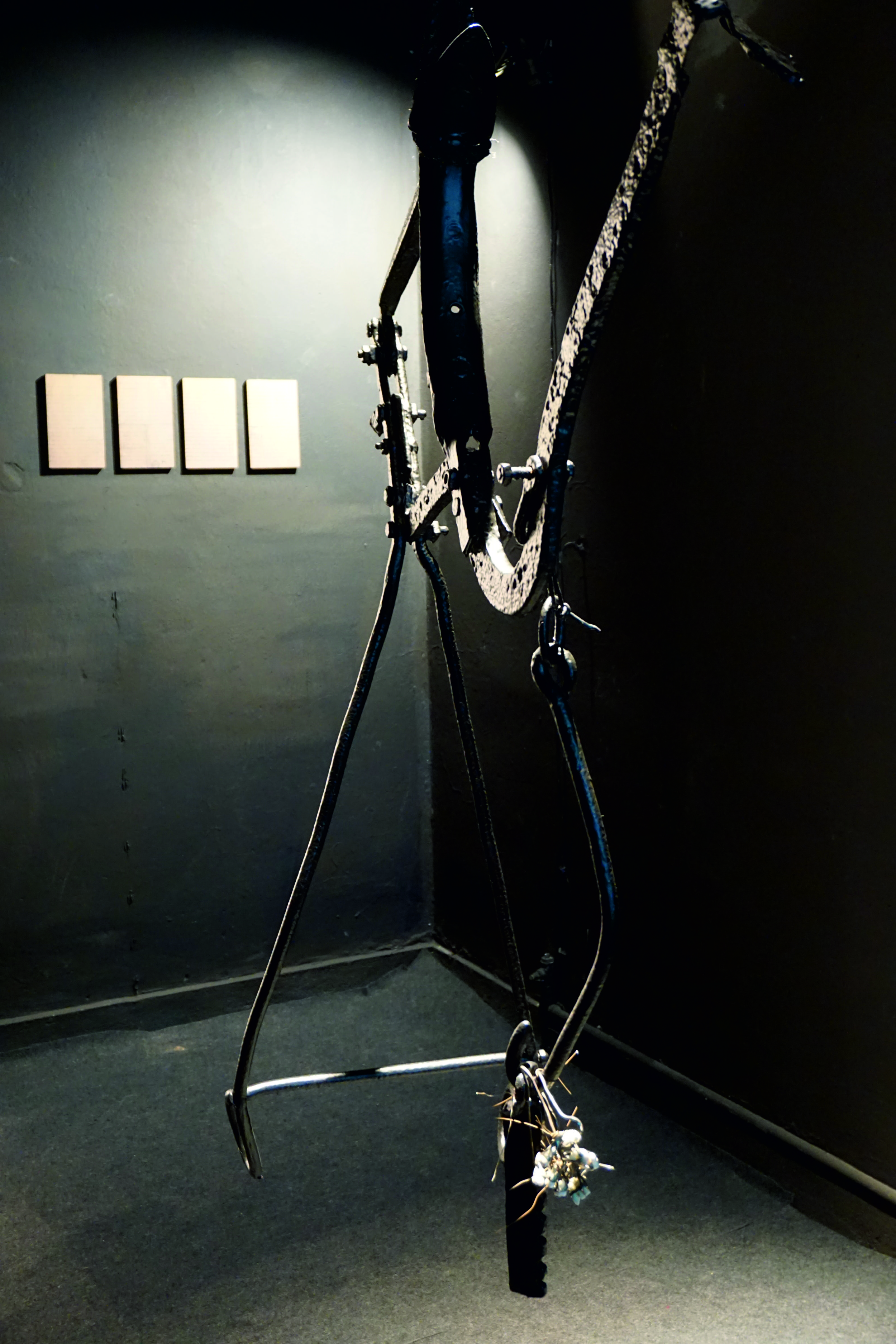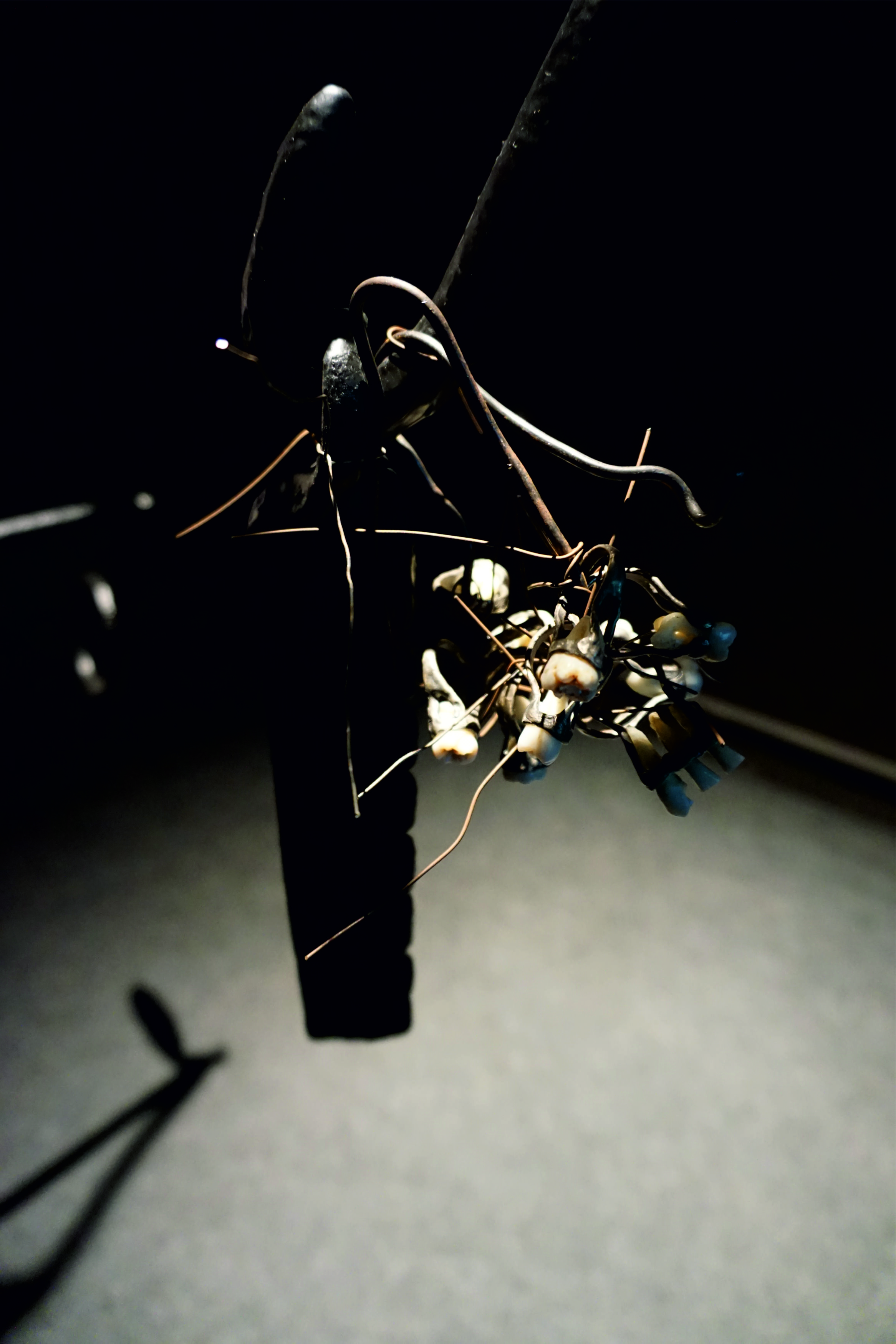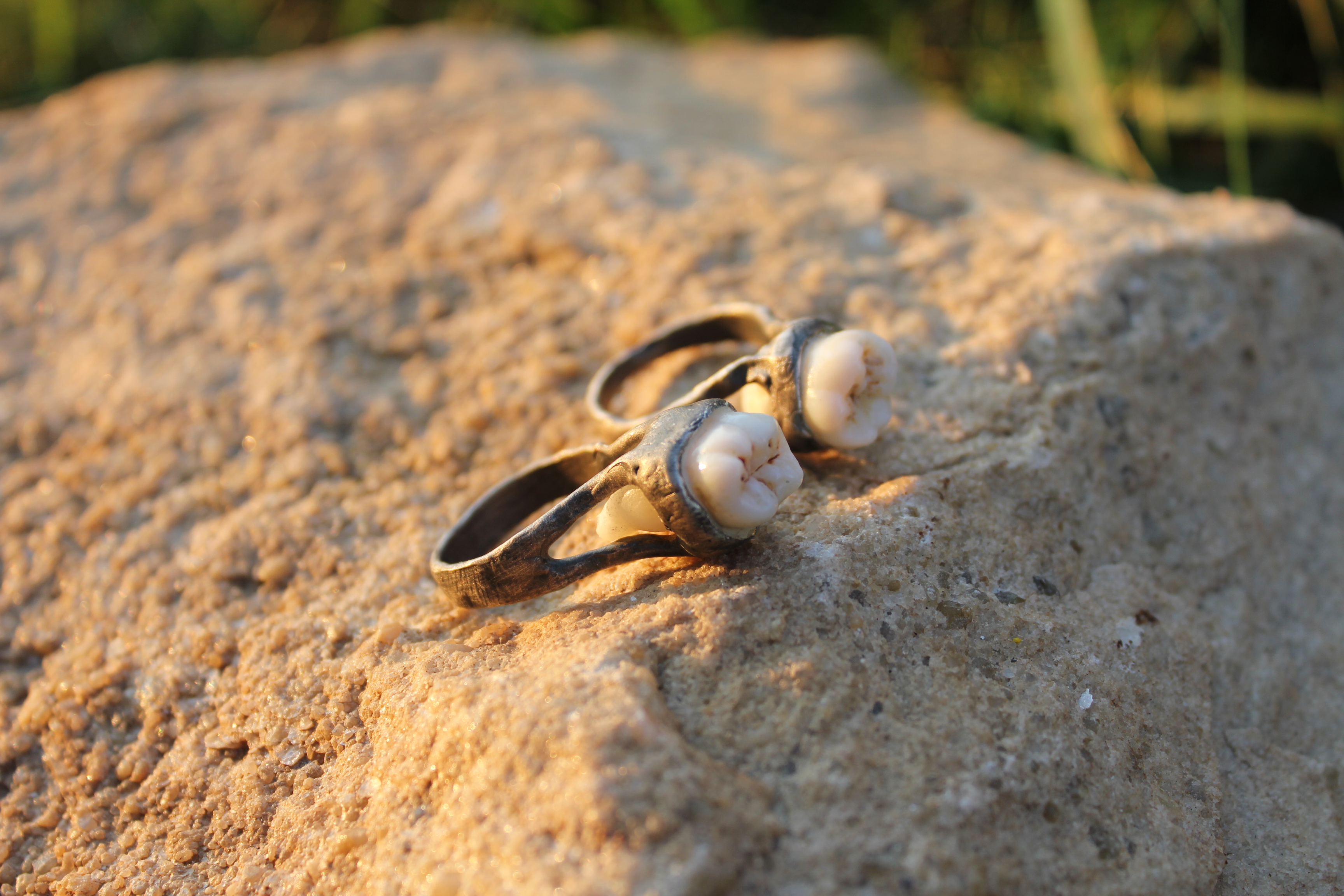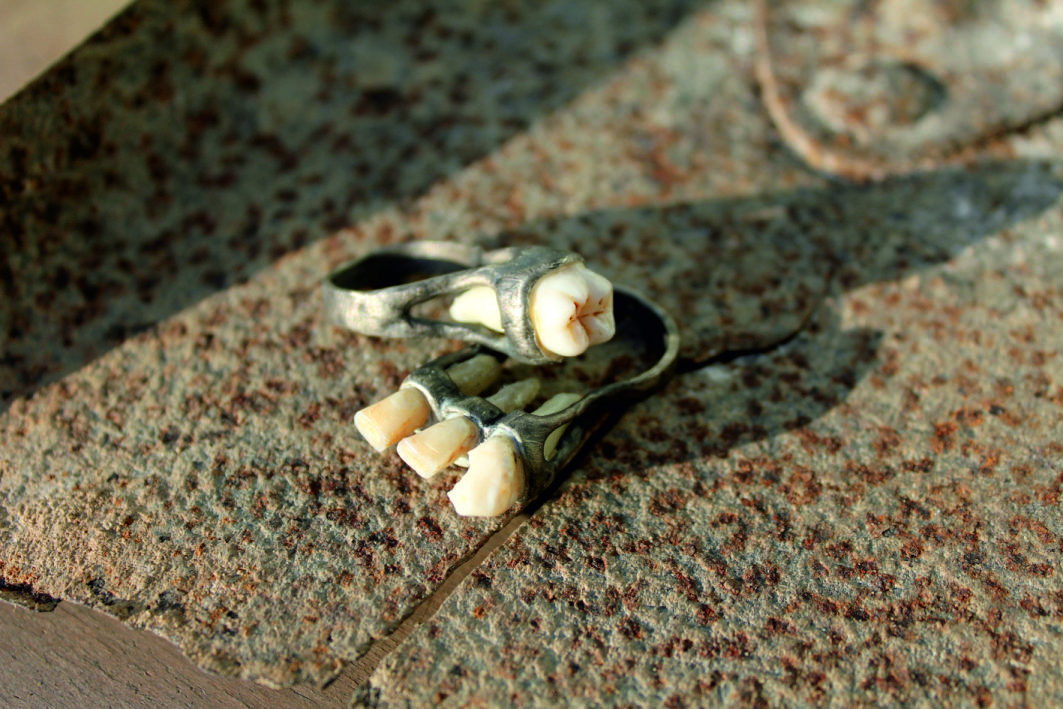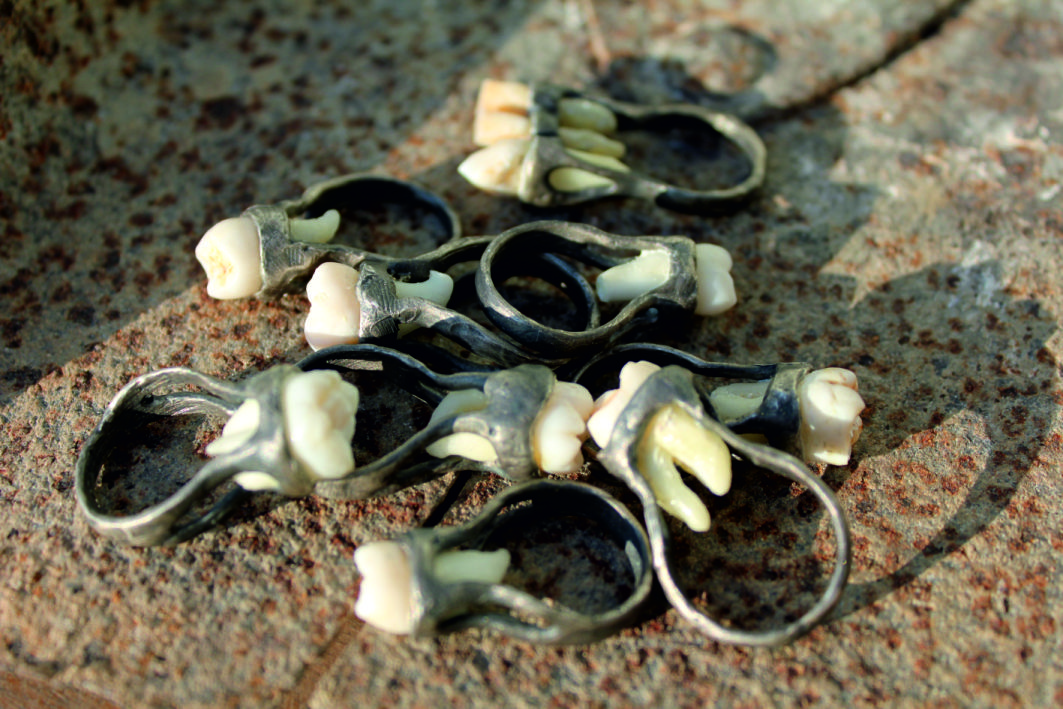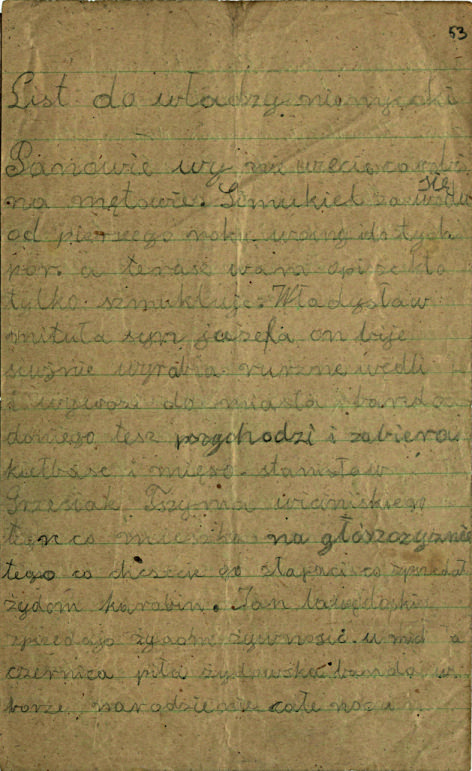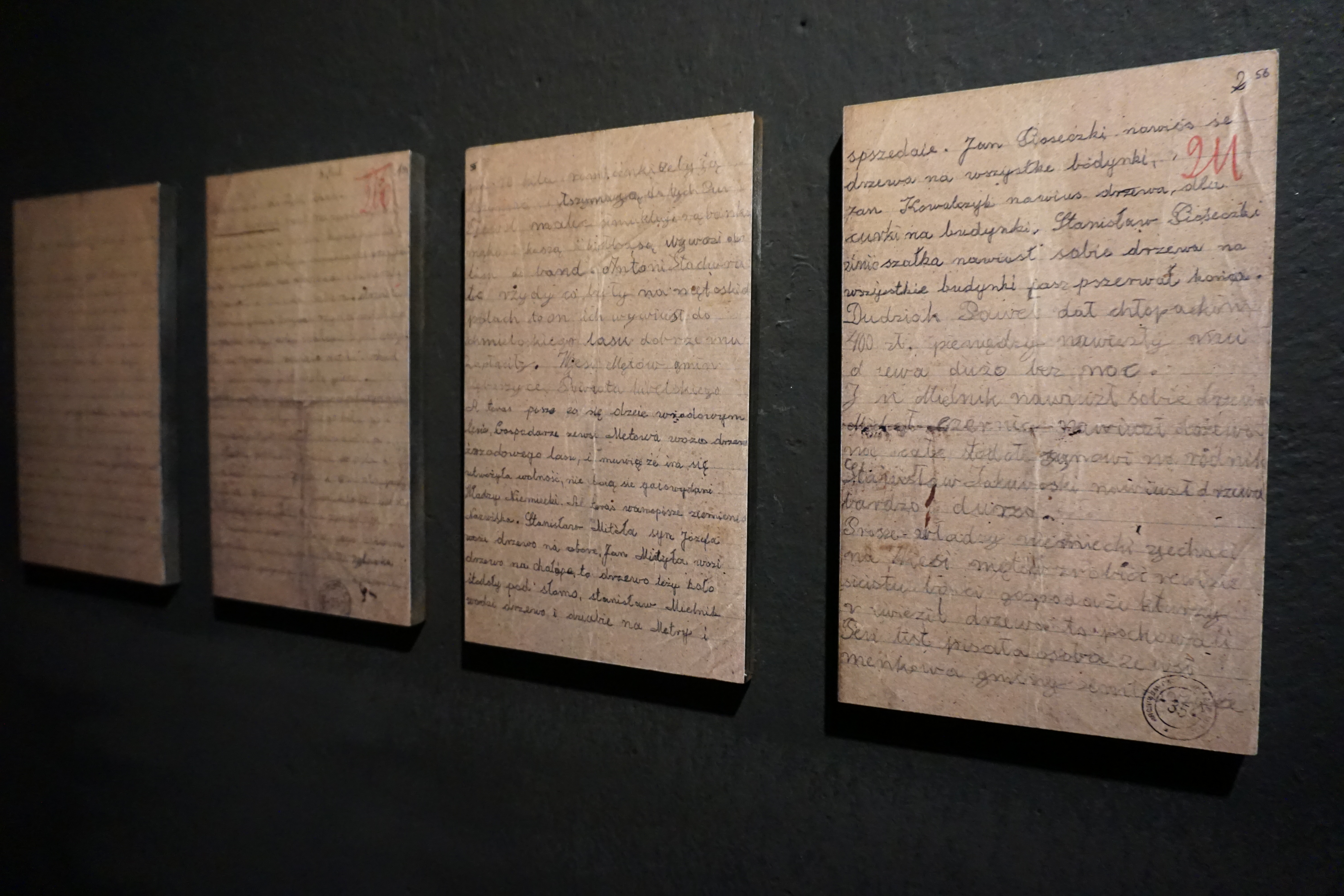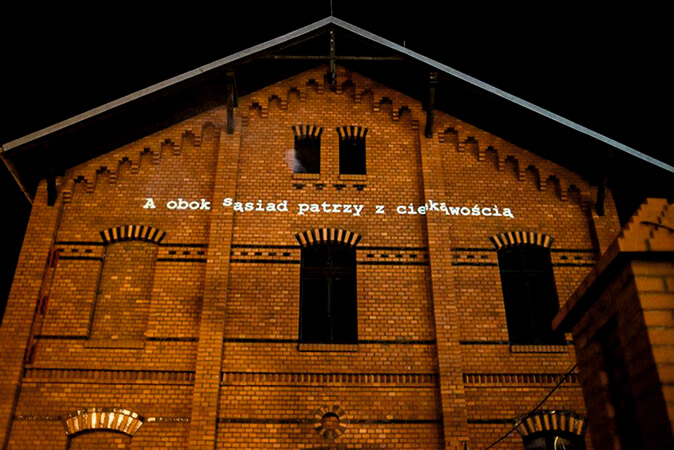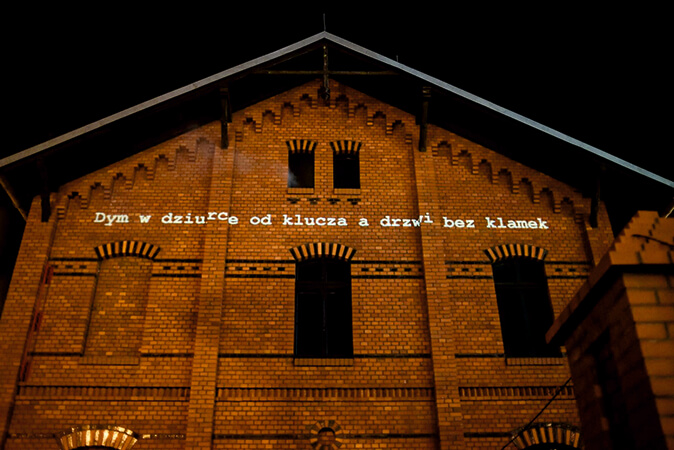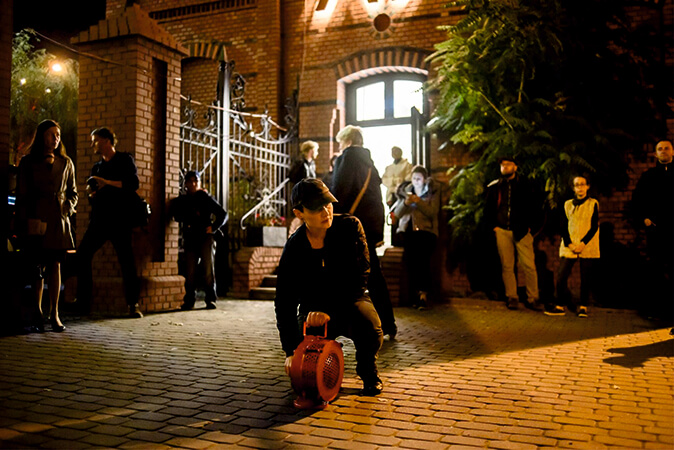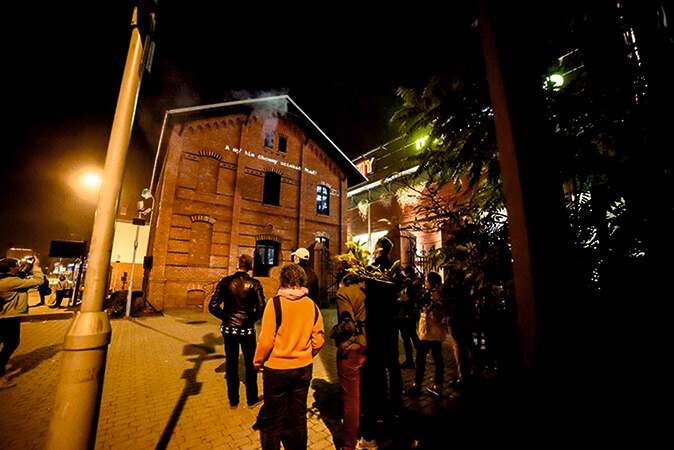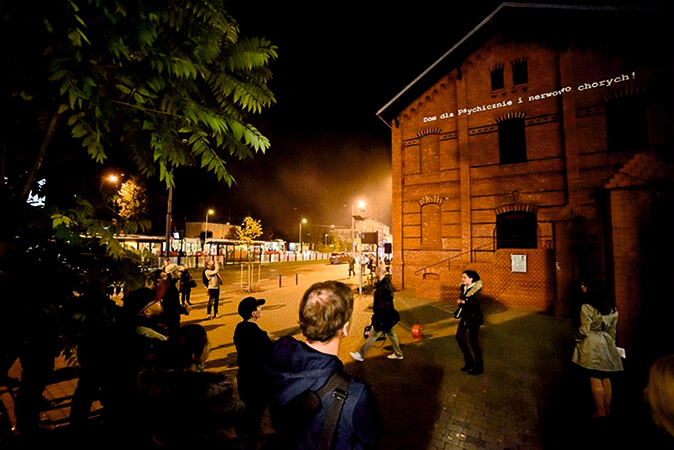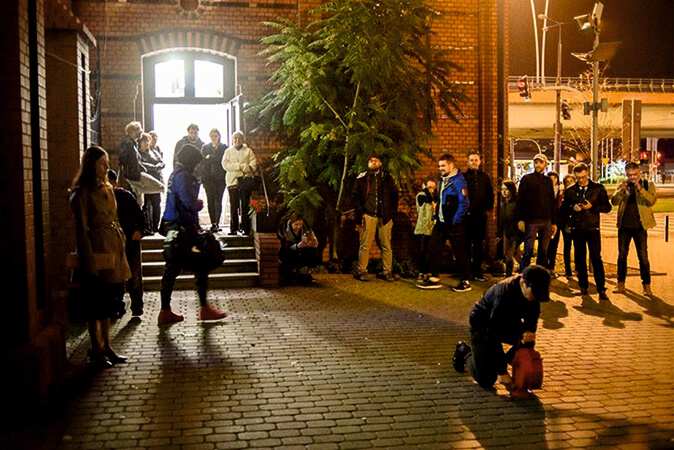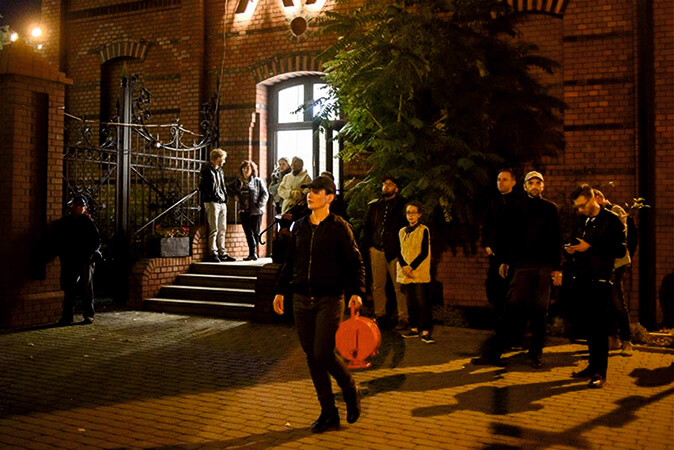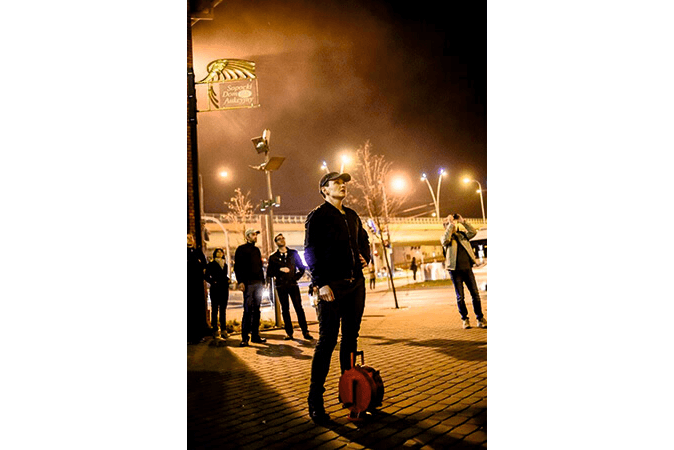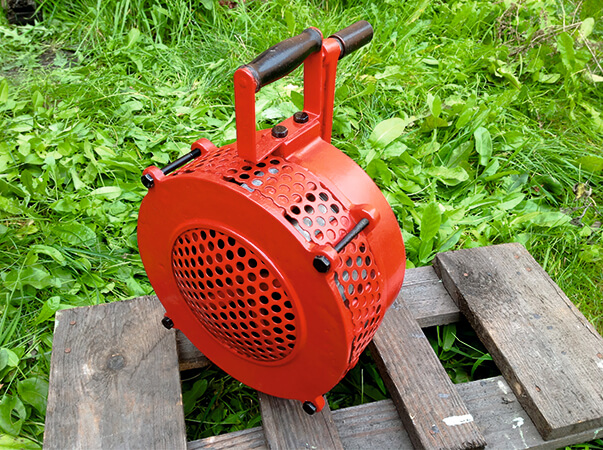The Golden Harvest
| title: |
The Golden Harvest |
| year: | 2018 |
| dimensions: | 300/120 cm, 200/120 cm, 21/12 cm |
| technique: | installation with video image, steel, hemp rope, paper, human teeth bound in oxidized silver, pr. 925, archival materials courtesy of the Museum of Struggle and Martyrdom in Treblinka, State Archives in Lublin |
| description: |
On November the 5th and 7th, 1945, on the initiative of the Main Commission for the Investigation of German Crimes in Poland, a special team, including representatives of the Central Jewish Historical Commission, travelled to Treblinka: Rachela Auerbach and Dr. Józef Kermisz. During the local inspection, the site of the former death camp was inspected and photographic documentation was taken. Both of them wrote down their impressions. In a report by Rachela Auerbach, she wrote about Polish Colorado or gold fever in Treblinka: All kinds of looters and marauders come here - with shovels, the whole groups. And they dig, search, carve. They are sieving sand, pulling out from the ground half-distributed body parts, bones, scattered remains, hoping that they will come across even a coin, one golden tooth. Even the unfired bullets and bombs are carried here - people of jackals and hyenas. They put a few at once, making huge holes in the desecrated, blood-soaked, mixed with the ashes of the burnt Jews ground... Dr. Józef Kermisz did not spare any words of indignation: Numerous witnesses testified that the local people dug up on sandy ground in order to extract allegedly hidden valuables, as a result of which human remains and numerous objects of everyday use were uncovered. (...) At the camp, the commission noticed huge pits caused by the explosion of bombs. These bombs from the summer resort of Cyranów were lit by marauders in order to bring out to the surface of supposedly buried valuables, or corpses of people who had golden teeth in their jaws. The only surviving, small archival photograph in the collection of the Treblinka Museum of Struggle and Martyrdom is a visual reference to the situation described above. The photograph has an interesting background, it was also the subject of discussion and polemic several years ago thanks to an essay by J. T. Gross, The Golden Harvest. A piece about the events that occurred on the outskirts of the Holocaust. Although it was not possible to clearly determine the timing, place and circumstances of the creation of the photograph (it is known that it comes from the vicinity of Wólka Okraglik, a few kilometres from Treblinka), it definitely evokes unrest through the visible at first plane human bones, skulls, presumably dug up earlier by the people posing for the photograph. The phenomenon to which the scene from the photograph refers, the plundering of Jewish property - begins in Nazi Europe long before the Jews were exterminated. It is not so much the Holocaust itself as the "recovery of" "obsolete possessions", which has been in the process for many years after the war. The plundering, digging up corpses, human remains in search of valuables on the grounds of the former Treblinka camp lasted for many years (the last official information about it comes from 2002!). The object resembling a single-piece country plow, used during the last century in the Polish rural areas, hung upside down, is a direct reference to the work of the diggers from the photo. On the plow there were placed "symbolic treasures", impoverished property, suggesting a harvest during digging up the root crops. An additional context and a transcript of specific interpersonal relations, as well as a fact that occurred during the occupation years, is an anonymous denunciation to its neighbours directed " towards the German authority", originating in the 1940s, from the village of Mętów, found in the State Archive in Lublin. /Dorota Nieznalska/ translated into English: Alicja Kubicka, Sylwia Aniszewska
|
© Dorota Nieznalska 2009-2023 | privacy policy
website implementation: Brandrei.com
